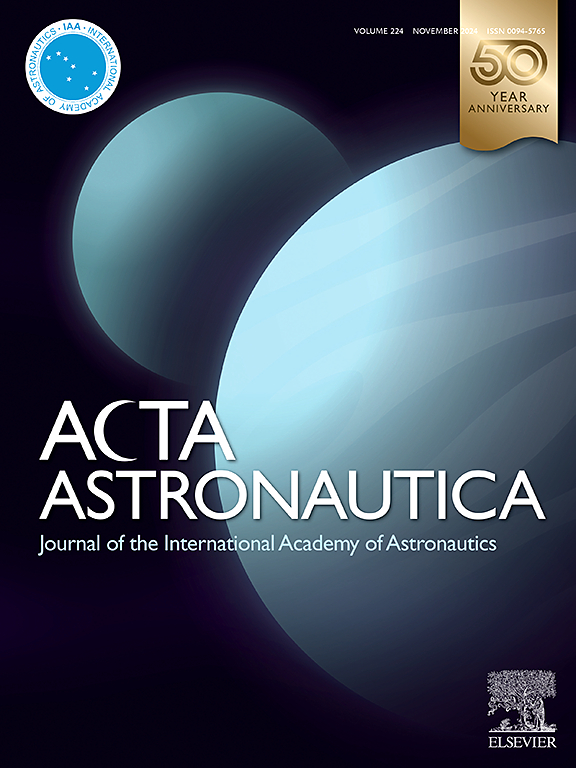Combination of altimetry crossovers and Doppler observables for orbit determination and geodetic parameter recovery: Application to Callisto
IF 3.1
2区 物理与天体物理
Q1 ENGINEERING, AEROSPACE
引用次数: 0
Abstract
An accurate knowledge of the orientation, the tidal deformability, and the gravity field of a celestial body is fundamental to provide constraints on its internal structure. These quantities may be retrieved by processing radiometric tracking and altimetry data from a probe in orbit around such body. This paper presents a method to combine altimetry crossovers with two-way Doppler tracking observations at normal equation level, using the Bernese GNSS Software and the pyXover software library. This method was applied to a proposed 200 km altitude orbiter around Callisto, a privileged destination for the upcoming phase of Solar System exploration. Enhancing “standard” Doppler tracking with altimetry generally benefited both orbit determination and a joint estimation of the orientation of the north pole and of planetary librations. The retrieval of low-degree gravity field parameters was also improved by the addition of altimetry data. However, the improvements on the estimated parameters were highly dependent on the characteristics of the simulation, e.g., the underlying topography roughness. Overall, combining radioscience with altimetry data accounted for a visible reduction of correlations among estimated parameters, while also allowing for a consistent estimation of the “vertical” Love number along with gravity.
结合测高交叉和多普勒观测数据进行轨道测定和大地参数恢复:对卡利斯托的应用
准确了解一个天体的方位、潮汐变形能力和重力场是对其内部结构提供约束的基础。这些数据可通过处理围绕该天体运行的探测器的辐射跟踪和测高数据来获取。本文介绍了一种方法,利用伯尔尼全球导航卫星系统软件和 pyXover 软件库,将测高交叉与正常等式水平的双向多普勒跟踪观测结合起来。该方法被应用于围绕卡利斯托的拟议 200 公里高度轨道飞行器,卡利斯托是即将到来的太阳系探索阶段的重要目的地。用测高法加强 "标准 "多普勒跟踪,总体上有利于轨道确定以及对北极和行星天平的方位进行联合估计。由于增加了测高数据,低度重力场参数的检索也得到了改进。不过,对估计参数的改进在很大程度上取决于模拟的特征,例如底层地形的粗糙度。总之,将无线电科学与测高数据结合起来,可以明显降低估计参数之间的相关性,同时还可以对 "垂直 "洛夫数 h2 和重力进行一致的估计。
本文章由计算机程序翻译,如有差异,请以英文原文为准。
求助全文
约1分钟内获得全文
求助全文
来源期刊

Acta Astronautica
工程技术-工程:宇航
CiteScore
7.20
自引率
22.90%
发文量
599
审稿时长
53 days
期刊介绍:
Acta Astronautica is sponsored by the International Academy of Astronautics. Content is based on original contributions in all fields of basic, engineering, life and social space sciences and of space technology related to:
The peaceful scientific exploration of space,
Its exploitation for human welfare and progress,
Conception, design, development and operation of space-borne and Earth-based systems,
In addition to regular issues, the journal publishes selected proceedings of the annual International Astronautical Congress (IAC), transactions of the IAA and special issues on topics of current interest, such as microgravity, space station technology, geostationary orbits, and space economics. Other subject areas include satellite technology, space transportation and communications, space energy, power and propulsion, astrodynamics, extraterrestrial intelligence and Earth observations.
 求助内容:
求助内容: 应助结果提醒方式:
应助结果提醒方式:


